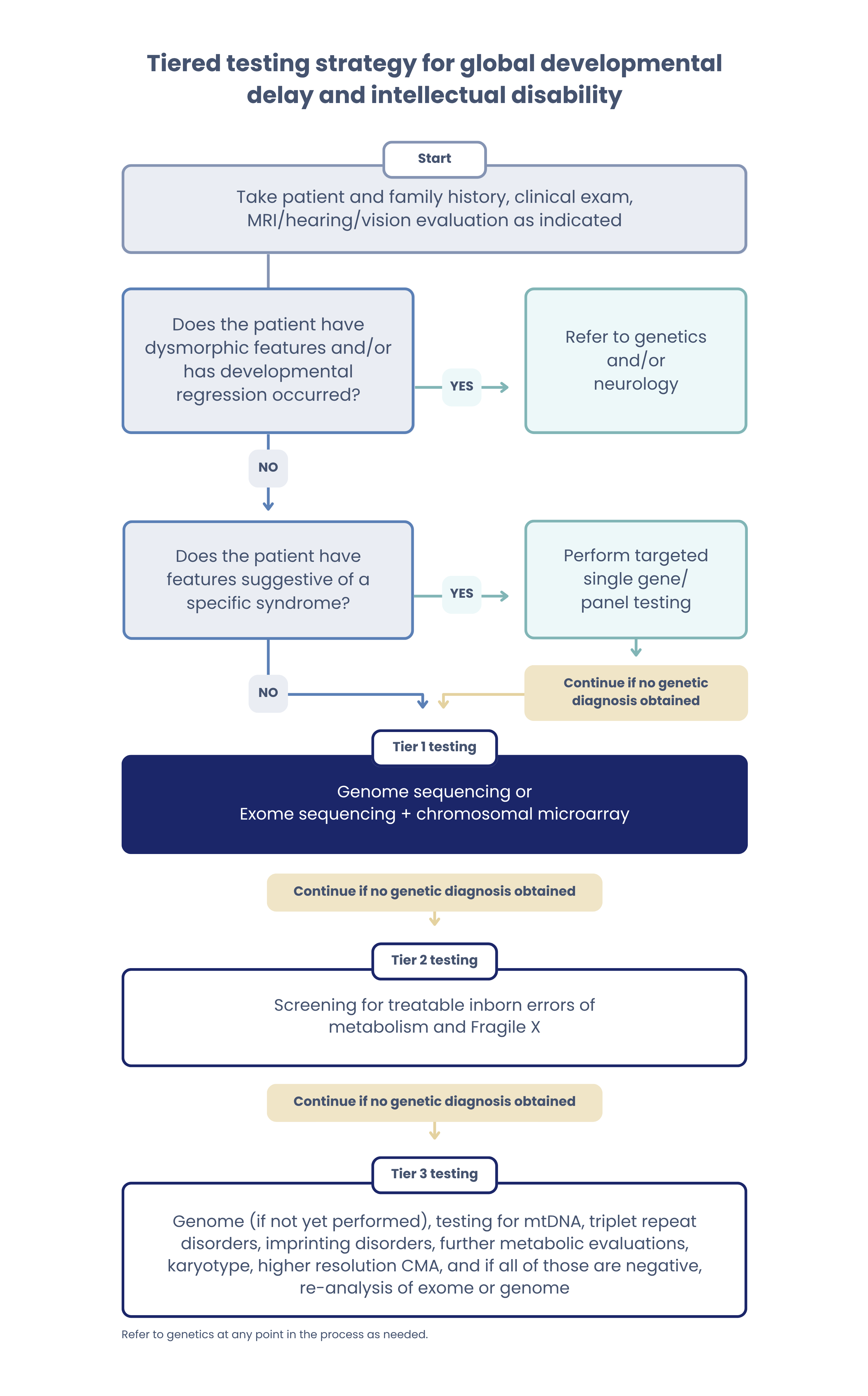AAP recommends exome and genome sequencing for global developmental delay and intellectual disability
July 25, 2025 • 4 min read

July 25, 2025 • 4 min read

For the first time since 2014, the American Academy of Pediatrics (AAP) has updated its guidance on how to evaluate children with global developmental delay (GDD) or intellectual disability (ID)—and the change is significant.
Exome and genome sequencing are now recommended as the first-line test when no specific diagnosis is suspected—not as the last resort.1 This shift aligns the AAP with the American College of Medical Genetics and Genomics’ similar recommendations for exome and genome testing.2
Waiting years for answers doesn’t just delay treatment; it delays peace of mind. According to the AAP, early use of comprehensive genetic testing leads to earlier, more accurate diagnoses1 and reduces the long, winding diagnostic odyssey that families often face.
Compared to traditional tests like chromosomal microarray (CMA) and single- or multi-gene panels, exome and genome sequencing have a higher diagnostic yield–at least twice that of CMA for GDD and ID3,4–and can guide treatment, reduce or prevent unnecessary procedures and referrals, and provide actionable answers. First-line exome testing, specifically, can save an average of $6,845 per patient.5
The updated exome and genome sequencing AAP guidance reflects these benefits, highlighting the “superior diagnostic yield and higher cost-effectiveness” of genomic sequencing for GDD and ID when used earlier in the diagnostic process.1
This isn’t just about the science. It’s about giving families clarity sooner.

—Katherine Stueland, CEO, GeneDx

Who should be tested?
Any child with unexplained GDD or ID, even if their symptoms are mild.
GDD refers to significant delays in two or more developmental domains—such as motor, language, cognitive, or social skills—in children under 5. Examples of GDD include a child not pulling to stand after 12 months of age, not talking by the time they’re 18 months old, or an inability for them to say small, three-word sentences by age 4.6
ID is the term used when a child has ongoing challenges with learning, problem-solving, and everyday skills like communication or self-care. It’s typically diagnosed after age 5, but may be identified earlier with appropriate assessment.

What should you order?
Exome sequencing (often paired with CMA) or genome sequencing. These are now Tier 1 tests.

When should you order or refer for genetic testing?
Right away, especially if regression is present or the phenotype is complex. If you feel comfortable ordering directly, our online portal simplifies the process. Prefer to refer? Connect your patients to a local genetic specialist or use our telehealth referral option.

Where do you start?
With a solid family history and a thorough physical exam—and now, a conversation about genetic testing options as well.
We’ve been a leader in pediatric genomic diagnostics for decades. Our rapid, comprehensive testing meets the latest AAP guidance—and our team is here to help you interpret results and plan next steps with confidence.

Want help getting started? Click here to get in touch with our team.
References: 1. Rodan LH, et al. Pediatrics. 2025; e2025072219. doi:10.1542/peds.2025-072219. 2. Manickam K, et al. Genet Med. 2021;23(11):2029-2037. doi: 10.1038/s41436-021-01242. 3. Savatt JM, Myers SM. Front Pediatr. 2021 Feb 19;9:526779. doi: 10.3389/fped.2021.52679. eCollection 2021. doi: 10.3389/fped.2021.526779. 4. Srivastava S, et al. Genet Med. 2019 Nov;21(11):2413–2421; https://doi.org/10.1038/s41436- 019-0554-6. 5. Tan TY, et al. JAMA Pediatr. 2017;171(9):855. doi:10.1001/jamapediatrics.2017.1755. 6. Milestone Moments Checklist. Centers for Disease Control and Prevention. Accessed July 2, 2025. https://www.cdc.gov/ncbddd/actearly/pdf/LTSAE-Checklist_COMPLIANT_30MCorrection_508.pdf.